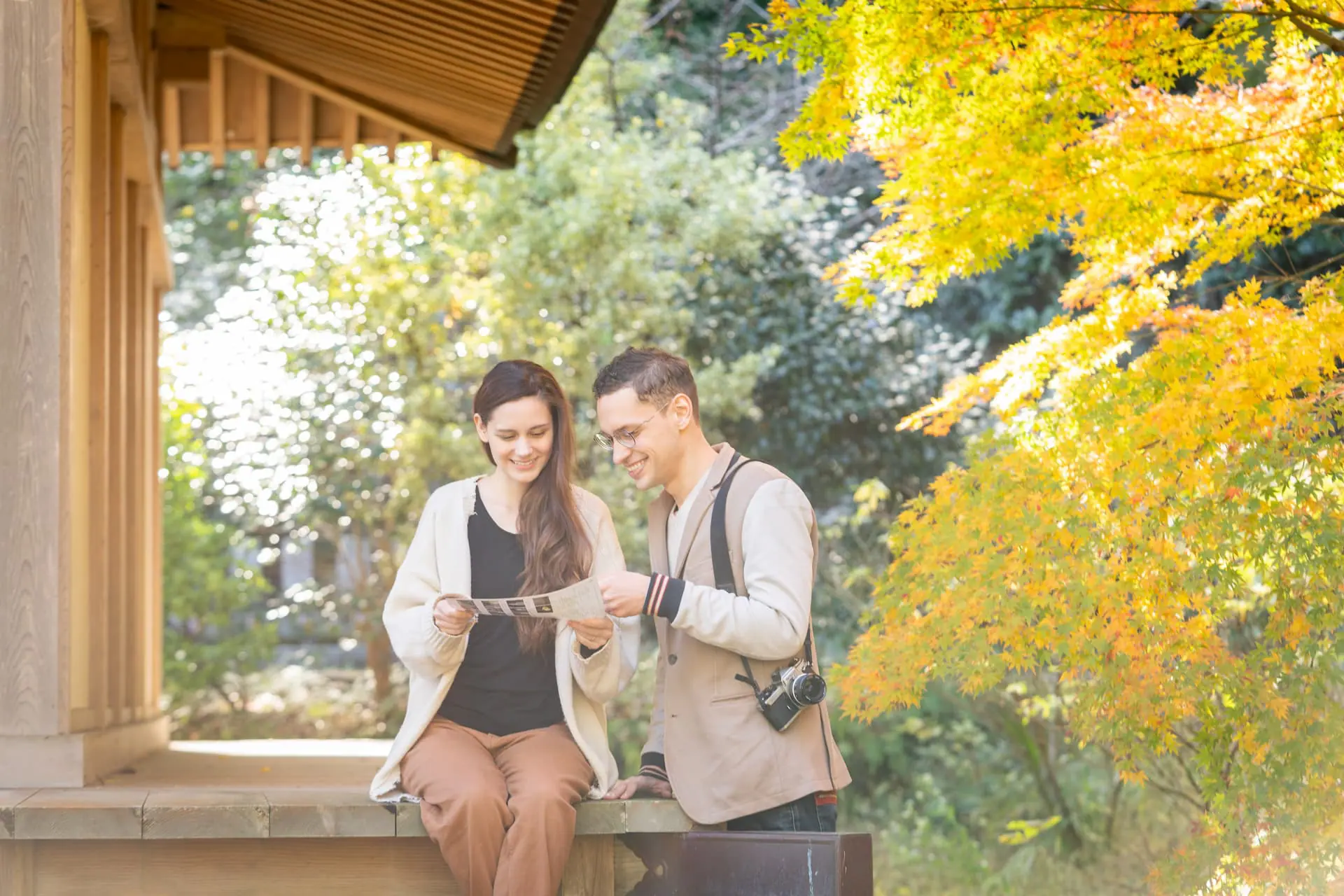
Things to Do | Visit Chiba | Latest update:2023/04/04
In the forested hills beneath Tateyama Castle sits a Buddhist temple comfortably nestled in a quiet suburb, meant to be a place of reflection. The dense seasonal colors and rustling trees all around put you at ease from the moment you step in. This temple is mainly known for its small hiking course around the “Small-Scale Shikoku 88 Places Pilgrimage”, which will take you on a 20-minute loop with 88 Buddhist monuments along the way, letting you explore the area more thoroughly. The main hall has small workshops to explore the Buddhist teachings as well. Both of these together make for a peaceful afternoon of soul searching.
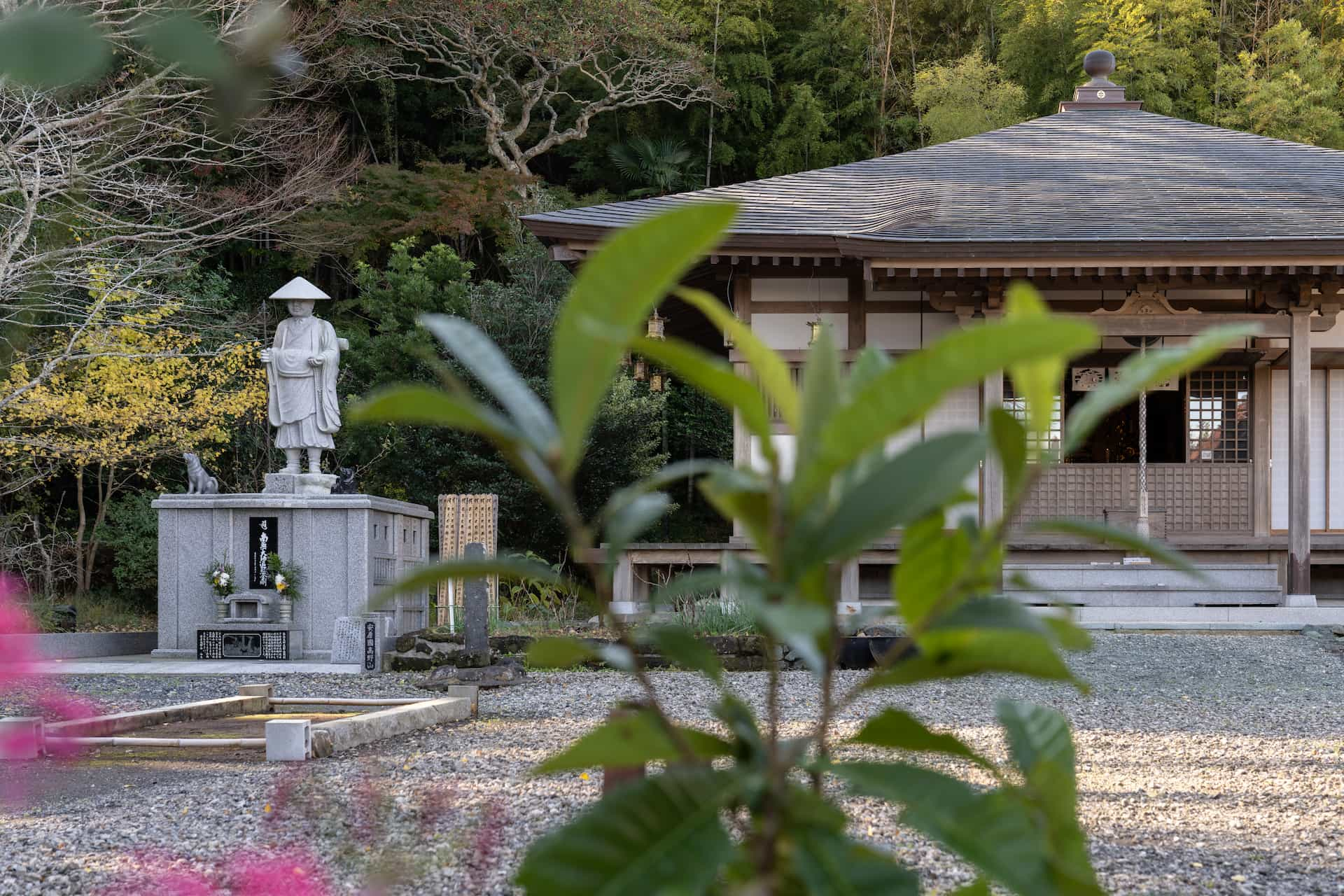
The enshrined Buddha in the main hall (Cintāmaṇicakra, or Nyo-irin-kannon in Japanese) is said to hear your requests when you face a decision that seemingly has no right answer, or you become lost in life. It is for this reason that people journey here to hike the 88 places pilgrimage, as it is meant to be a trial (“shugyō” in Japanese) to simulate your own path through life. It is gradually sloped in the early (young) stages, becomes an uphill battle in mid-life, and then returns to downhill as you progress into old age towards your inevitable start from the beginning once more.
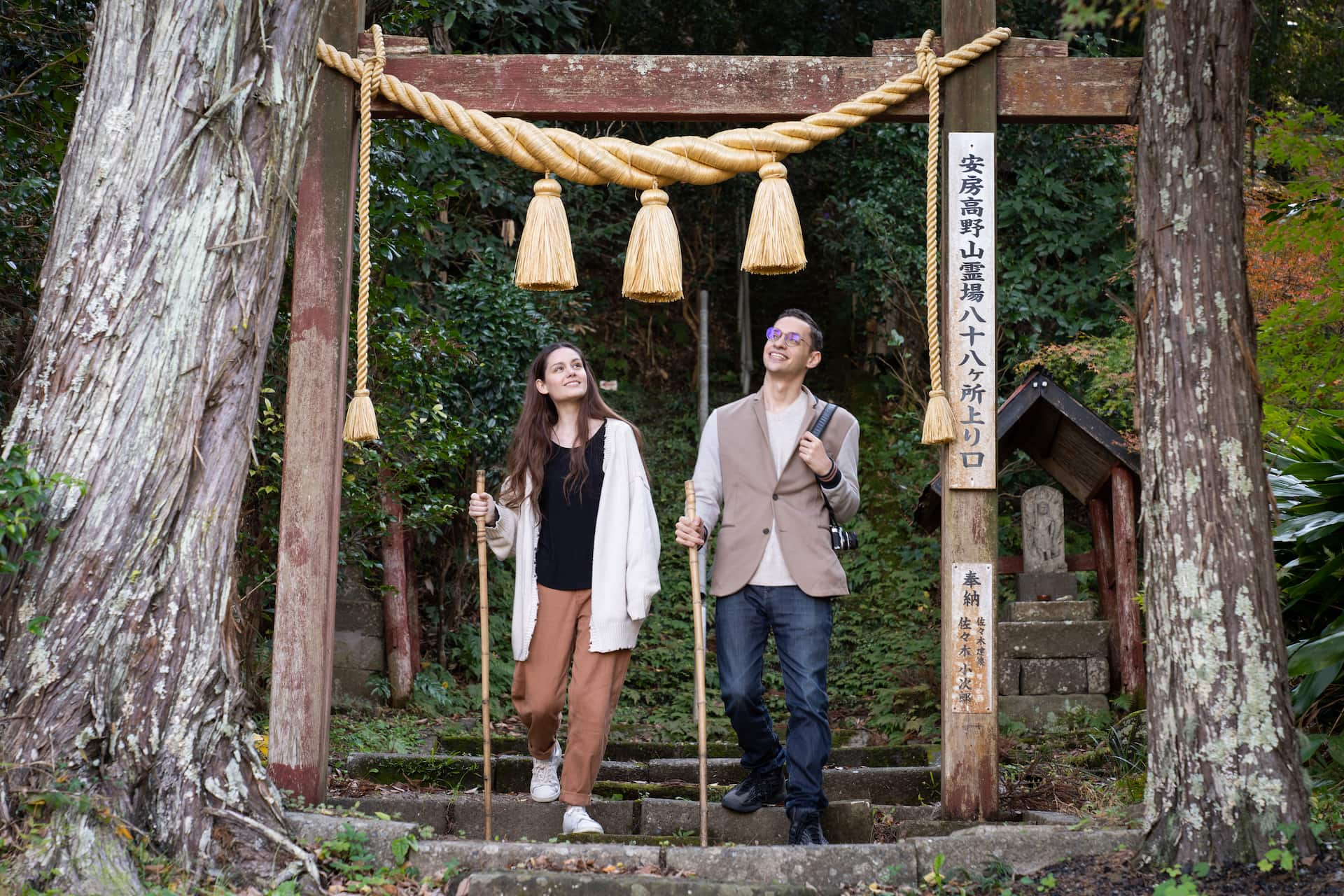
Aside from the introspective hike and natural beauty of the area, Myo-on-in Temple also has many experience workshops for you to observe and try different Buddhist practices. The deputy head priest of the temple, Ryoyu, first demonstrated for us some authentic sutra reading, of which there are over 600 original volumes stored here at Myo-on-in Temple; and moreover, they were all copied by hand before being transported here years ago.
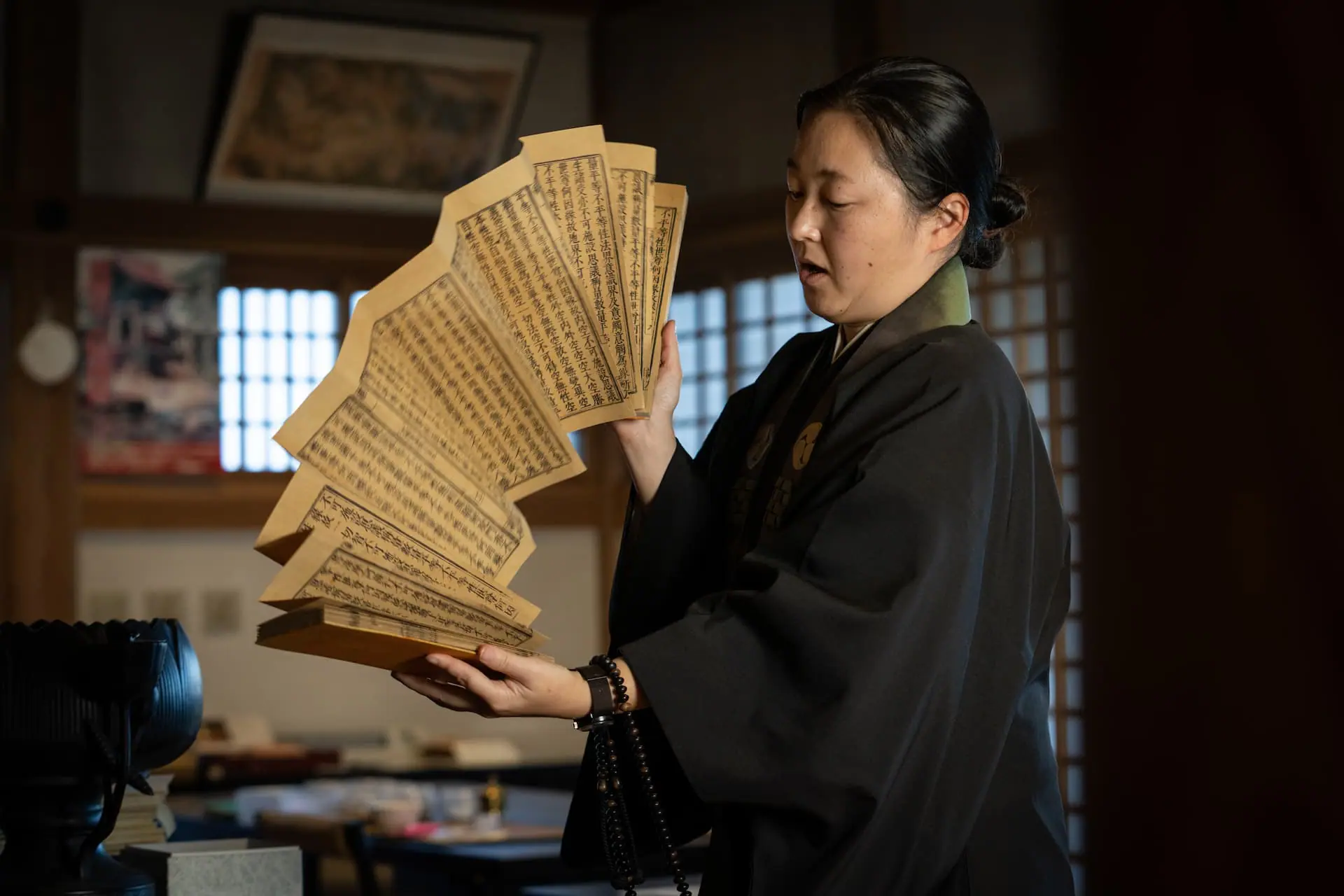
A large part of Buddhist worship involves not only reading, but writing of the sutra. It’s a form of preservation of the scripture, but more importantly a form of meditation. Shakyō is the practice of not writing from sight or memory, but rather tracing over characters that are already written. First, you’ll have a large piece of thin paper laid over a full page of the sutra as it appears in Japanese kanji characters, and then, you’ll trace over them, stroke by stroke.
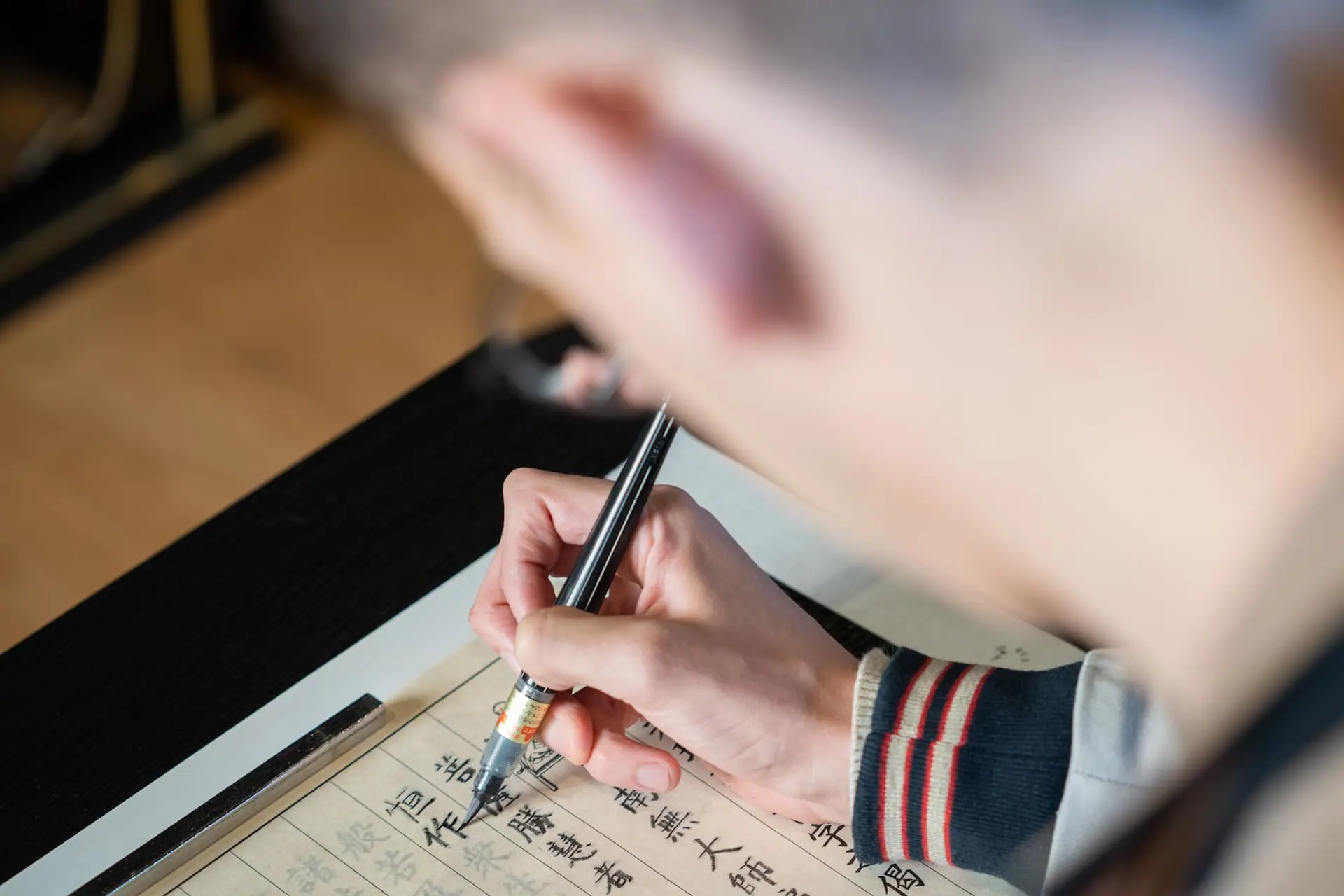
We used a nifty pen-type brush that had an ink cartridge inside it, letting you squeeze more ink out as necessary. This is a time to focus on meditative writing, but also wish for things in the world to go in a positive direction. Moreover, it’s a time to admit that we have desires and wishes as humans, and while sometimes they may be hedonistic, we must do our best to live our lives to the end with integrity.
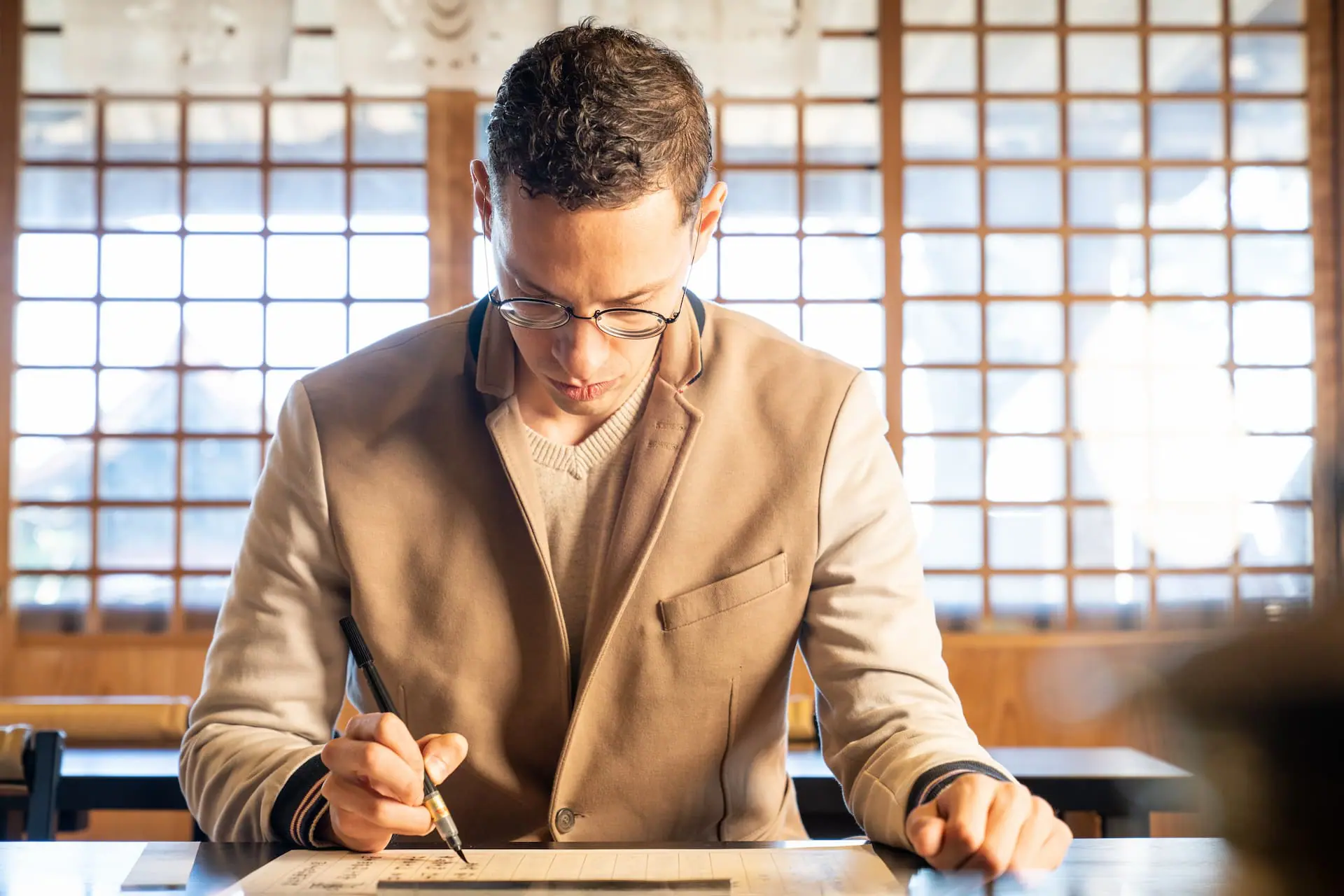
You’ll always get the smell of incense when in Buddhist temples. Interestingly, spices used in incense go hand in hand with Buddhism, as they made their way across the Asian continent along with those who spread teachings and founded temples. Spices are used to cleanse the senses and “ward off” evil, and also physically to rub into your hands before entering the temple and engaging in worship.
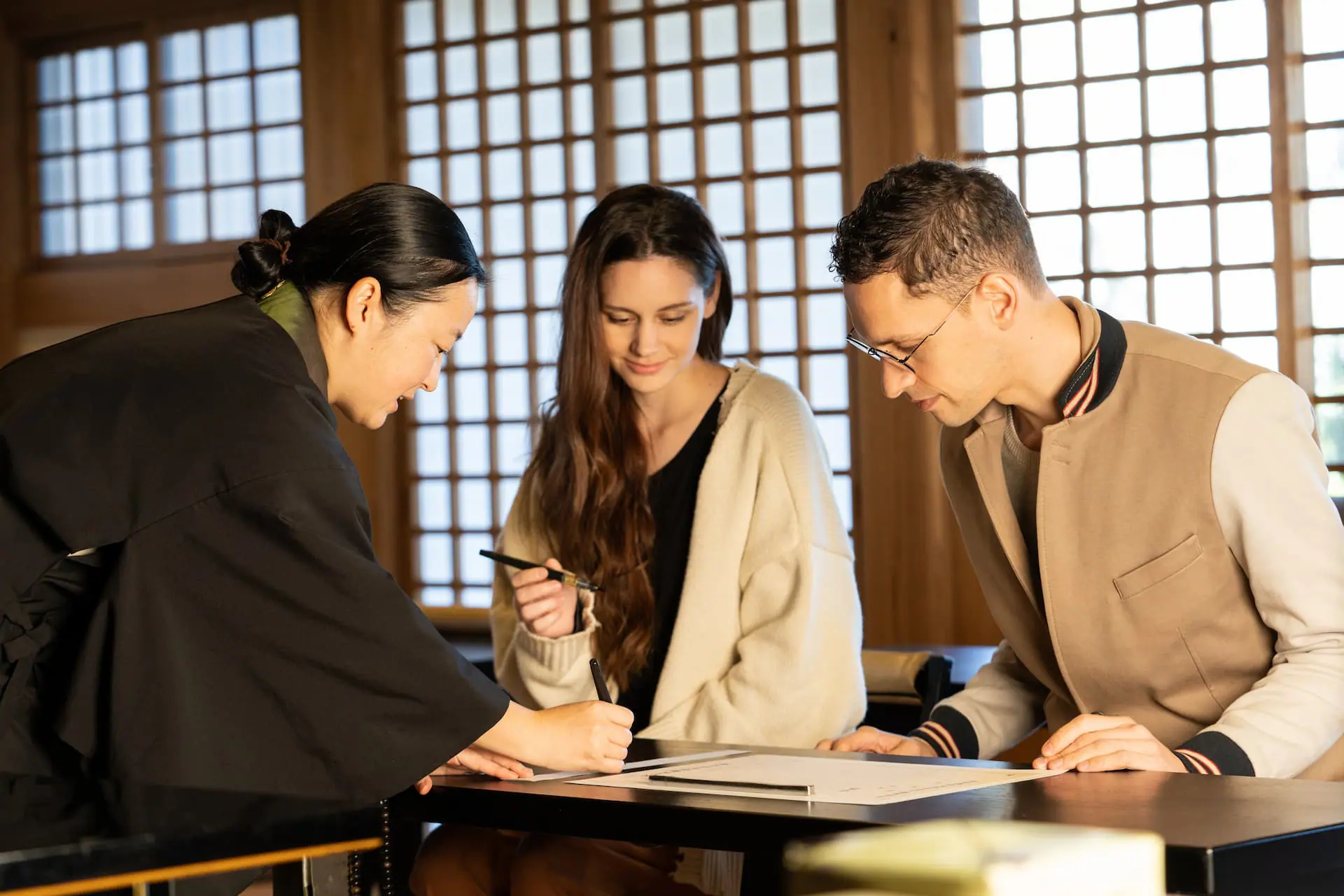
We had a rare experience here of making our own “scent”, using a purely custom combination of powdered spices. First examining the spices, smelling them, then taking small spoonfuls to combine with one another, our unique scent was soon finished. Ryoyu, the monk here, told us that this was an early form of perfume, or a way to mark your presence in different places that you visited. Now, many still use their own combinations of spices in the letters they write, or in places in their homes.
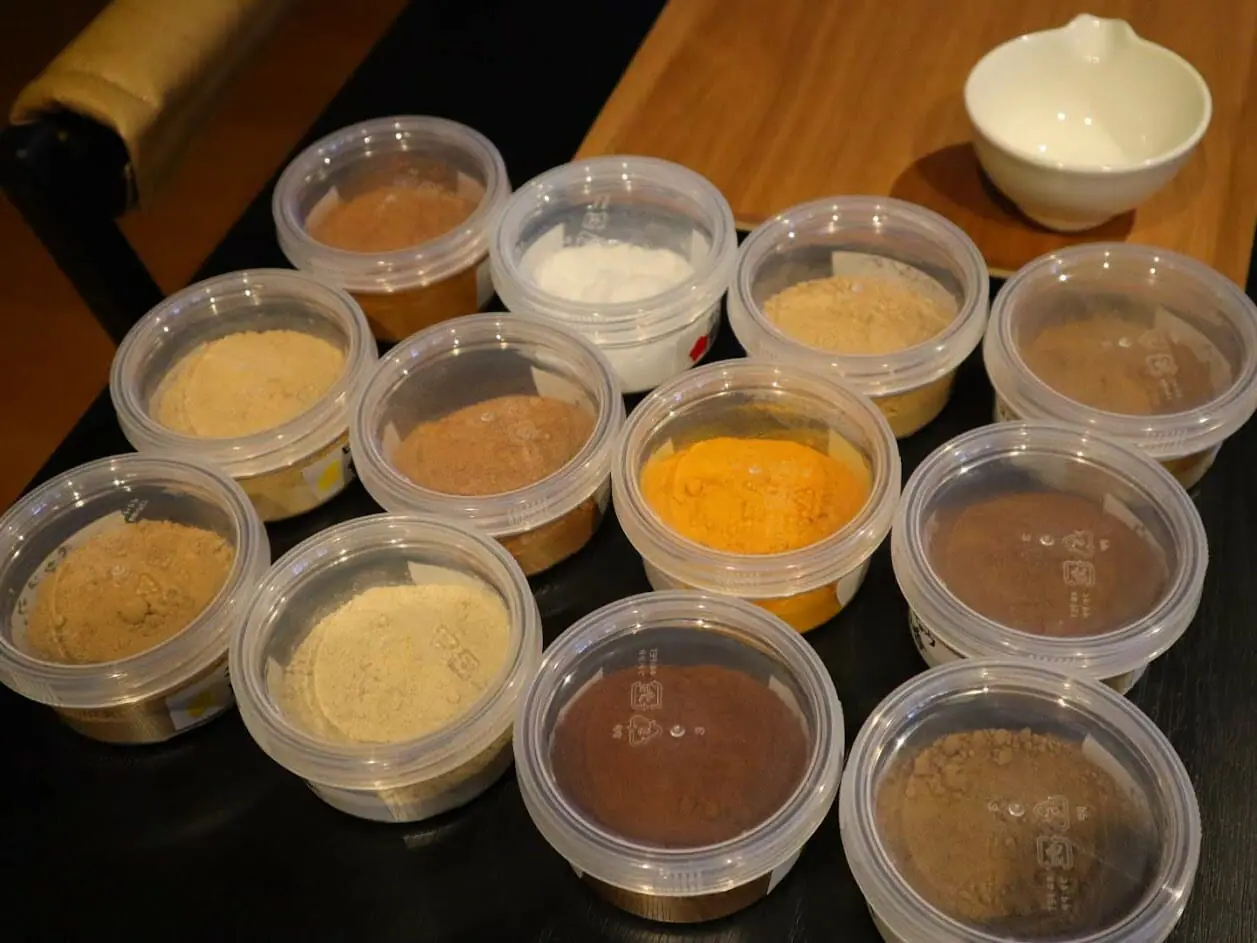
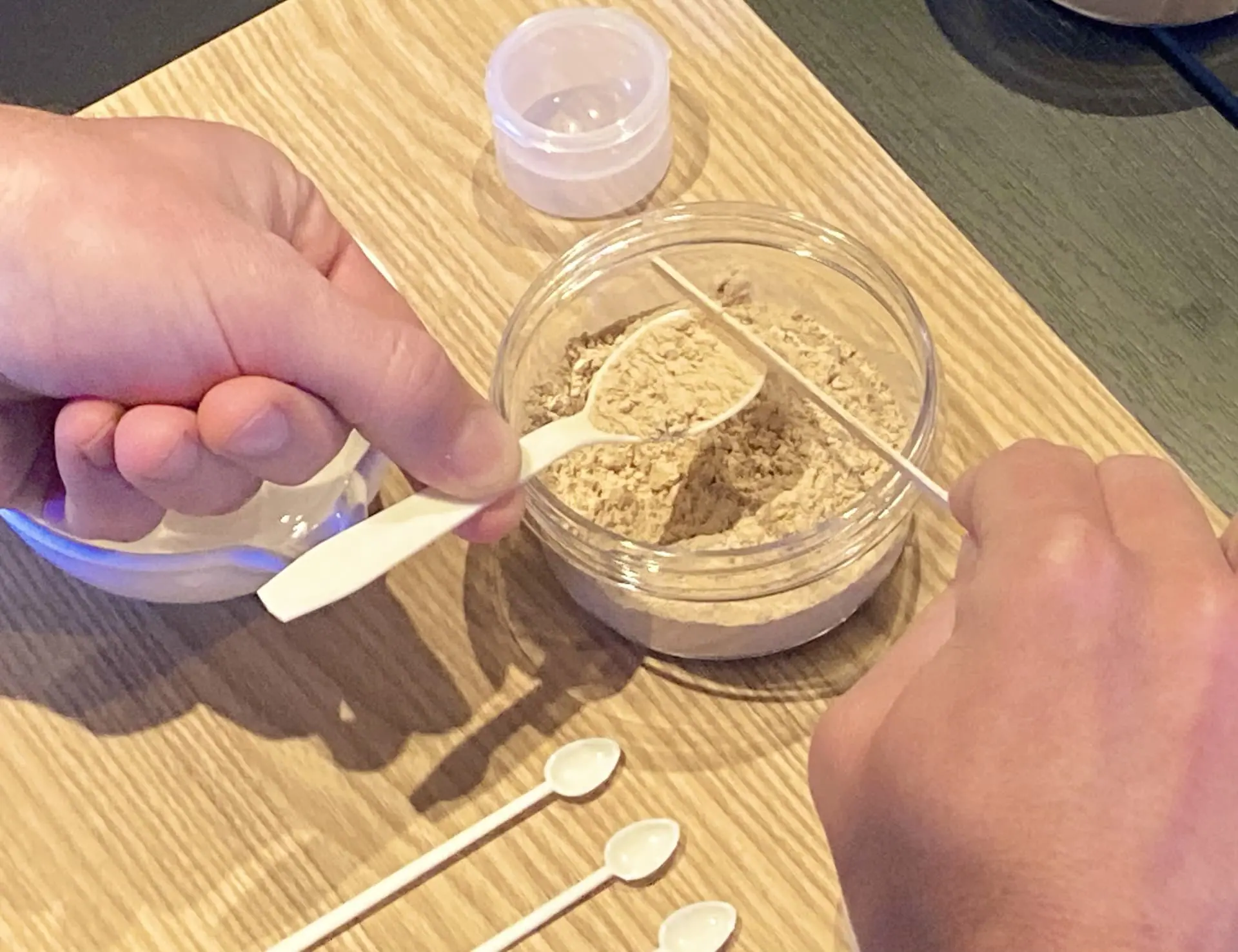
The sights, smells, meditative writing, and small hike made this a very manageable spiritual experience. For a slightly remote location, beautiful nature, and “101” crash course in Buddhist activities, Myo-on-in Temple is a highly recommended stop if you’re coming to Tateyama.
1689 Kamisanagura, Tateyama City
(From JR Tateyama Station, take the JR Bus Kanto for Awa-Shirahama, get off at Kamisanagura and walk for 3 minutes.)
+81-470-23-8285
Accessibility